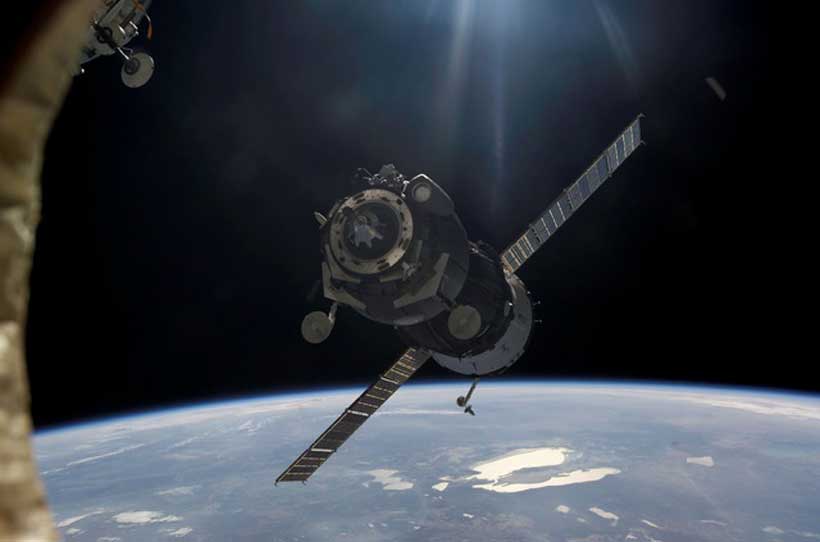
By Ahyousha Khan 31 December 2020
The Outer Space had become the object of human fascination for civilian and military use during the Cold War. In recent years, significant scientific progress has occurred in space programs. This has led to the utilization of space for various scientific domains that have civilian and military applications. These include; Intelligence, Surveillance, and Reconnaissance (ISR), communication, navigation, global positioning, remote sensing, early warning systems, and nuclear command and control systems. Today nearly 2000 satellites of 50 countries operate in outer space to enable fast communication and provide instant information and intelligence. This makes outer space an ultimate high ground for information warfare as well. In the 21st century, the developed countries have been dominating outer space with their presence so far. The space-based assets as the force multiplier during the US-led operations like ‘Desert Strom’ have also encouraged the other countries to catch-up with the emergent domain. Since states with space-based assets and satellites will have better availability of information and data for land, air, and naval forces. In South Asia, India aspires to have an extensive presence in outer space. In this regard, while pursuing a rapid space program, India has sent a mission to Mars and has tested the ASAT weapon back in 2019.
Recently, India’s Space Research Organization (ISRO) has announced launching a CMS-01 communication satellite from the second launch pad at Satish Dhawan Space Centre (SDSC). CMS-01 is India’s 42nd communication satellite in space, which would provide an extended C-band of the frequency spectrum. It would improve and expand the telecommunication coverage for Andaman and Nicobar Islands; both islands are of critical importance for India’s missile and nuclear weapons program. The ISRO intends to launch a new launcher for small satellites with EOS-2 capability (earth observation satellite). It is also quite noteworthy that India has recently signed an agreement with the US, which is the last of the foundational agreements between both states for enhanced military cooperation. BECA would enable India to acquire sensitive information, satellite data, and real-time access to the US geospatial intelligence. These developments would further increase India’s space capabilities. It would further provide India an advantage over Pakistan, specifically in a conflict situation. Furthermore, it would further embolden India to launch a ‘preemptive strike’ against Pakistan.
Though there are many peaceful uses of outer space, the growing phenomenon is the use of space by countries for militarization and weaponization. Initially, at the start of the space race, states were focused on limiting outer space use for military purposes. With developments in the international arena like US withdrawal from Open Skies Treaty, creation of its Space Force, and rapid testing and development of ASAT weapons by the US, Russia, China, and India has opened ways for space militarization and ultimately weaponization. Most significantly, India has been pursuing its space program faster, which is a hostile country towards Pakistan. India’s space aspirations appeared to be quite ambiguous when the former US President, Mr. Ronald Reagan, presented his Star War program. At that time, the pioneer of India’s space program, Satish Dhawan, asserted, “that time would tell whether Indian activities in space would remain exclusively civilian and pacifist.” However, when India tested its ASAT weapon back in March 2019, the decision came as a surprise to the international community that hailed India’s space program as peaceful. However, India’s ASAT test was not of a surprise for Pakistan since it had reiterated several times that India is heading towards space weaponization.
Today it is not just missiles that cross through space or target assets in space, but missiles can be placed in space, and space assets can target other space-based assets. This pursuit of space for military purposes has increased the speed and quantity of information and data available to the states. Likewise, the states with space-based assets would have real-time information about their adversary. Such information could be utilized to target an adversary’s military assets in a preemptive attack. Resultantly, this scenario would increase uncertainty between the rival states and create a security dilemma for those still behind in space militarization. In the South Asian context, space militarization and weaponization initiated by India would further disturb the regional deterrence equation primarily ensured by Pakistan’s nuclear capability.
Summarizing it all, Indian pursuit of space militarization and weaponization has further put at stake South Asian security. In this regard, Pakistan would be left with no choice but to develop space-based assets to maintain a credible deterrence vis-a-vis India. Implementation of initiatives like Pakistan’s “Space Program 2040” would be crucial to establish ground stations and ancillary facilities for the reception and use of data. Under the program, Pakistan intends to develop satellite tracking facilities; launch multipurpose satellites, and develop satellite launch vehicles. These developments would require a lot of financial resources; Pakistan, for the time being, needs to come up with creative ideas like small satellites and small satellite launch vehicles. In the same vein, Pakistan needs to seek agreements for satellite information sharing with China further. This would likely further add to its overall deterrent posture and pave the way to cope with this upcoming battleground.
